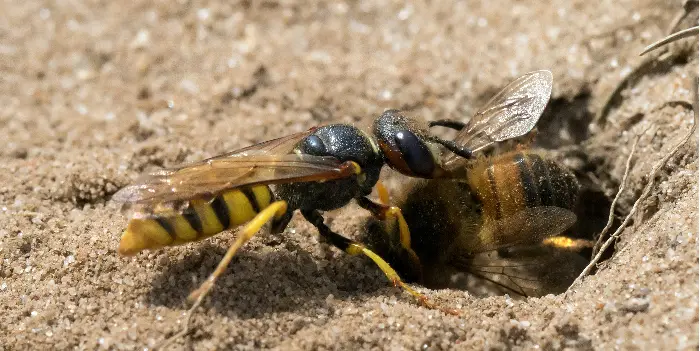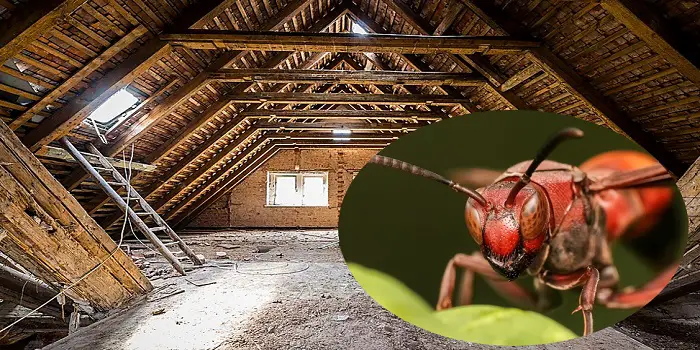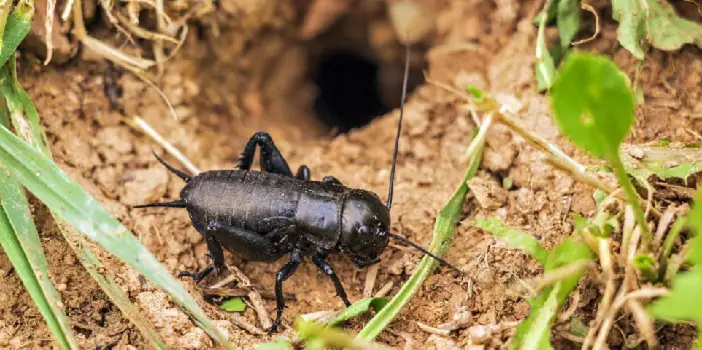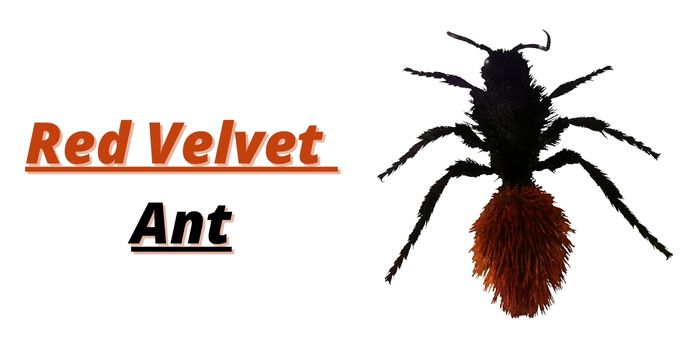
The red velvet ant is a solitary species of ant that does not build colonies, and conventional methods of combating other types of ants will not work in this situation.
The sting of these velvet ants is also notorious, so it’s best to avoid aggravating them. These wasps aren’t actual ants; rather, they’re wasps that look like ants.
Their hard exoskeleton protects them from predators by being difficult to bite or sting.
Additionally, the round shape of their exoskeleton makes it harder for predators to make a successful attack. And that’s the key reason why it’s so hard to kill velvet ants.
The common name for red velvet ants is “cow killer ants,” so named because their sting is painful enough that it might kill a cow– though, of course, it won’t.
Only female red velvet ants can sting, and the venom is only mildly toxic to cows but much more painful to humans.
If you are eager enough to know more about this, read the article to know more about these particular pests, where I have answered many more questions related to them.
Hopefully, you will enjoy knowing these tiny critters better…
What’s a Red Velvet Ant?
The red velvet ants are native to the eastern and southern parts of the US. But they are constantly in motion, and therefore they don’t create nests.
They only prefer to interact with others of their kind during mating or by some other uncommon accident.
Although red velvet ants are commonly found in grasslands, they hardly ever take up residence in our homes.
The only exception to this rule is when the weather outside becomes extreme or if there is a lot of rain, as they will then look for shelter.
Because they aren’t ants (they’re wasps) and don’t create ant hills or have huge colonies, people mistake them for them. Moreover, they are frequently seen crawling around on your grass or plants.
Velvet ants are parasitic wasps that people mistakenly refer to as ants due to the hair on their backs, which is always in some brilliant color like red, yellow, orange, or white.
As a result, they may demonstrate their fretfulness by displaying vivid colors on their backs.
Male Velvet Ants
Male velvet ants look more like wasps: they have wings and are darker. However, similar to other wasps and ants, only female velvet ants have stingers.
Velvet ants are unique in their reproduction process. Male ants fly close to the ground, searching for a potential mate, while female velvet ants do not have wings.
Female Velvet Ants
Female red velvet ants are commonly seen by people. They scurry around and attract males with their pheromones.
After mating, female red velvet ants lay their eggs inside the larvae of wasps or bees that are already developed.
The eggs will hatch relatively quickly, and newly hatched ants eat the larvae of their hosts for a period of one to two weeks.
The eggs will hatch in late spring, at which point the larvae will immediately enter their host’s cocoon. Ants are left to their own devices from the moment of hatching.
Because these ants can emit chemical signals that disguise their real identities, other hosts are unaware of the intruder.
Velvet ants help keep the wasps and bees in check by keeping the population under control.
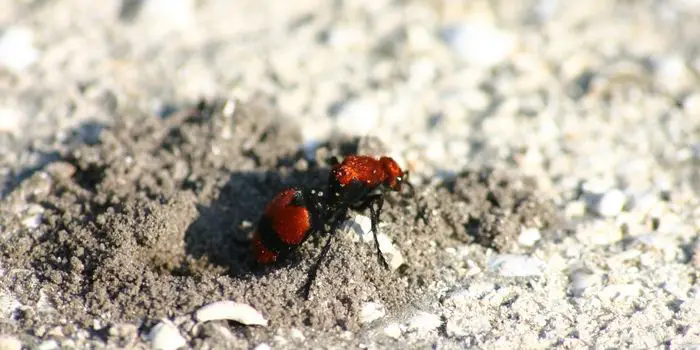
How Do You Get Rid of Red Velvet Ants?
Because they are predators of bees and wasps, as well as a potential danger to humans and animals, it’s important that you get rid of velvet ants immediately.
But unlike the invasion of regular ants, velvet ants hardly ever invade in big swarms; the method of removal for velvet ants is unique when compared to other types of ants.
The most successful way to fight these ants is to spray the individual ants with insecticide. You can kill these wasps with any insecticide meant for the wasps.
If you are wearing shoes with thick soles, you can step on them. But be cautious if you’re barefoot, do your best to avoid contact. Even though they’re small, their sting is incredibly painful!
In certain circumstances, if you detect a greater number of velvet ants, attempt to follow them. If there’s a nest nearby, find it because a bigger group of velvet ants might be quite bothersome.
They like to dwell in hollows, so they use wasp spray or other pesticides to get rid of them. In these situations, inquire about the best option at your local garden center.
Red velvet ants are not a common house pest, but they can be a problem for outdoor activities.
If you have pet dogs or children that spend time outside, be sure to take precautions against these stinging insects.
Red Velvet Ant Sting Symptoms – What to Do if They Bite?
The venom found in red velvet ants is not as dangerous as one might think, but it certainly packs a painful punch.
In truth, the toxins are relatively mild; however, you’re more likely to have a severe reaction to attacks from bees and wasps.
There is no sugarcoating it–a sting from one of these little creatures will hurt ten times more than any bee or wasp.
Of course, everyone experiences pain differently; some people feel only agony, while others may endure allergic reactions that range from irritation to full-blown hives.
If you’re looking to soothe an allergic reaction, DIY solutions such as using an ice cube or table salt may be effective:
Take a pinch of salt and add it to a cup of water. Make a paste out of it and apply it to the sting. The pain will be numb in approximately 5 minutes.
Ice cubes can be used to cool blood flow by putting an ice cube on the sting. It will also lessen discomfort and inflammation.
How to Prevent the Red Velvet Ants from Invading Your House?
Red velvet ants are not that interested in our homes, so they seldom appear in larger numbers. However, you don’t have anything to be concerned about if red velvet ants invade your home.
If these ants find a way inside your house, look for their entrance points. In most situations, this may be a crack in the wall or the house’s foundation.
You may try to repair these flaws yourself or hire an expert to assist you.
Also, as with other ants, you should empty your trash on a regular basis and strive to keep your home neat and clean.
If there are any overlapping branches close to your windows or roof that might be used by red velvet ants, look for them.
Trimming those branches might aid in the prevention of a Red Velvet Ant infestation.
The Conclusion
Velvet ants are difficult to kill because of their hard exoskeleton and powerful sting that can be very painful and are considered to be an effective defense against potential predators.
It’s best to take precautions to avoid them if you can. And if you think you have an infestation, the best course of action is to call a professional.

Welcome to ProShieldPest.com. I am Tina Jones. I have been working as a pest removal professional in Winslow, Arizona lately. At present, I love to spend my time with my family as a retiree.
Here I share all my knowledge and experiences to help people understand better how they can stop pests at their homes without actually killing them. Hopefully, the information you will find here will help in safeguarding your home! You can check more about me here.


